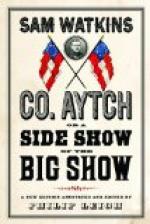There was an official who took her parasol and his cane, and they were impressed by the fact of having to write their names side by side in the book—Sir Owen Asher, Evelyn Innes.
On pushing through the swing-door, they found themselves in a small room hung with the Dutch school. There were other rooms, some four or five, opening one into the other, and lighted so that the light fell sideways on to the pictures. Owen praised the architecture. It was, he said, the most perfectly-constructed little gallery he had ever seen, and he ought to know, for he had seen every gallery in Europe. But he had not been here for many years and had quite forgotten it. “A veritable radiation of masterpieces,” he said, stepping aside to see one. But the girl was the greater attraction, and only half satisfied he returned to her, and when the attraction of the pictures grew irresistible he tried to engage her attention in their beauties, so that he might be allowed to enjoy them. To his surprise and pleasure the remarks he had hazarded provoked an extraordinary interest in her, and she begged of him to tell her more about the paintings. He was not without suspicion that the pictures were a secondary interest; but as it was clear that to hear him talk excited her admiration, he favoured her with all he knew regarding the Dutch school. She followed attentive as a peahen, he spreading a gorgeous tail of accumulated information. He asked if the dark background in Cuyp’s picture, “The White Horse and the Riding School,” was not admirable? And that old woman peeling onions in her little kitchen, painted by a modern would be realistic and vulgar; but the Dutchman knew that by light and shade the meanest subject could be made as romantic as a fairy tale. As dreamers and thinkers they did not compare with the Italians, but as painters they were equal to any. They were the first to introduce the trivialities of daily life into Art—the toil of the field, the gross pleasures of the tavern. “Look at these boors drinking; they are by Ostade. Are they not admirably drawn and painted? “Brick-making in a Landscape, by Teniers the younger.” Won’t you look at this? How beautiful! How interesting is its grey sky! Here are a set of pictures by Wouvermans—pictures of hawking. Here is a Brouwer, a very rare Dutch master, a very fine example too. And here is a Gerard Dow. Miss Innes, will you look at this composition? Is it not admirable? That rich curtain hung across the room, how beautifully painted, how sonorous in colour.”
“Ah! she’s playing a virginal!” said Evelyn, suddenly. “She is like me, playing and thinking of other things. You can see she is not thinking of the music. She is thinking ... she is thinking of the world outside.”
This pleased him, and he said, “Yes, I suppose it is like your life; it is full of the same romance and mystery.”
“What romance, what mystery? Tell me.”
They sat down on the bench in the third room, opposite the colonnade by Watteau, to which his thoughts frequently went, while telling her how, when cruising among the Greek Islands, he had often seen her, sometimes sitting in the music-room playing the virginal, sometimes walking in the ornamental park under a wet, grey sky, a somewhat desolate figure hurrying through shadows of storm.




